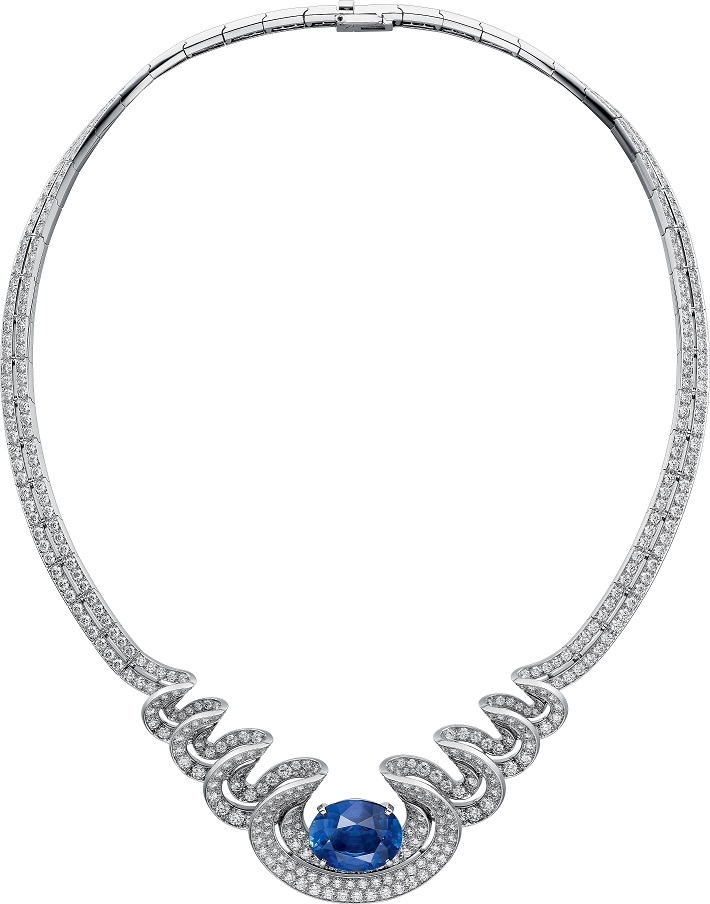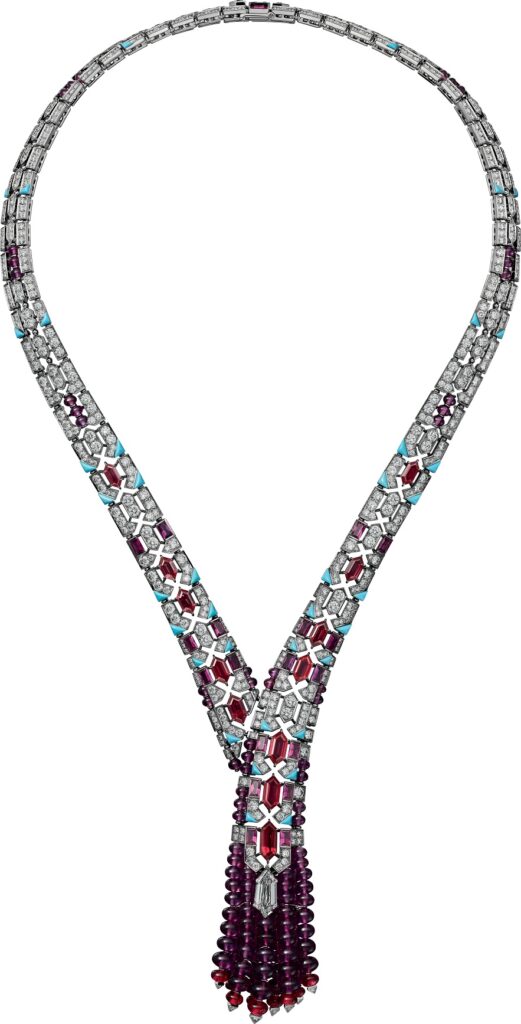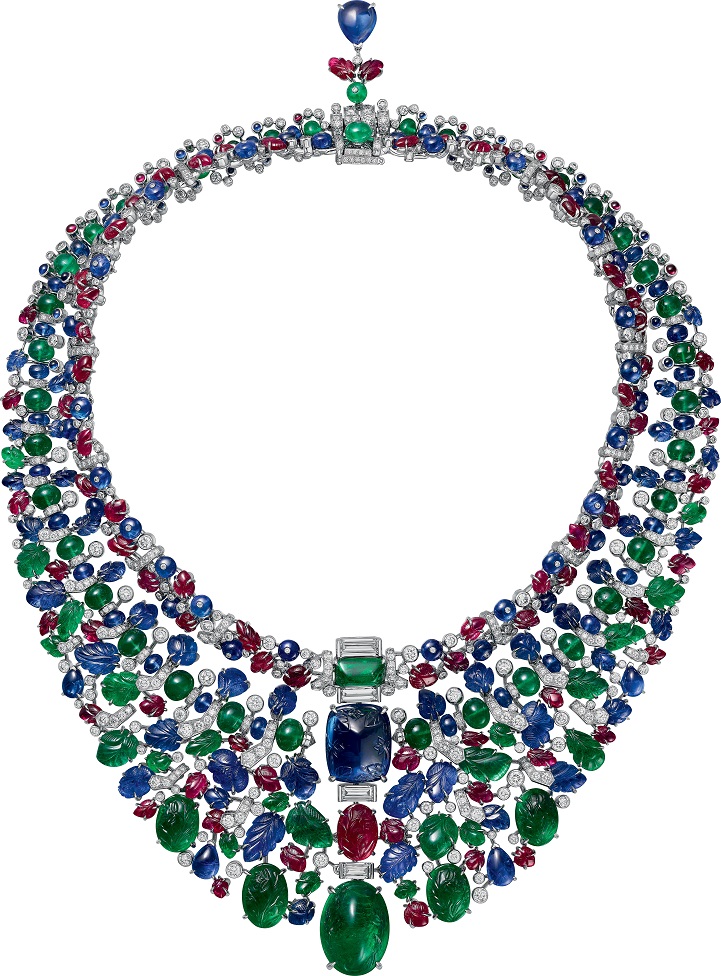
Throughout its history Cartier has been a leader in jewelry fabrication, creating a design vocabulary that sets it apart from all other jewelers. In the early days of Cartier when Louis and his two brothers Jacques and Pierre were expanding the business, they had many influences and inspirations that led them to create a whole new style for jewelry. Today, Cartier looks back to its past to move into the future.
Through its new collection of high jewelry and precious objects, Le Voyage Recommencé, Cartier pays homage to the richness of its style. Author François Chaille with Hélène Kelmachter, explores the Maison’s iconic design code and its influences in Cartier: Le Voyage Recommencé. The book, published by Flammarion, is packed with beautiful imagery of the pieces in the new collection and the story of how the Cartier creatives drew upon the past to create an assemblage that is thoroughly modern. The introduction starts off by discussing the Cartier style, its range and capacity for renewal all of which is attributed to the character of Louis Cartier, who was enchanted with other cultures and had a taste for modernity.
Light, Color and Geometry

Divided into four chapters the first is “Illuminated by Design”. This chapter starts off by delving into “Essential Design”, which explores the new creative path that Louis Cartier took when he was head of the Maison. The formal garland style was at the forefront of design at the time and Louis instead looked to the clean, simple line for direction. The chapter continues with “The Art of Light”, that discusses how as a young man, Louis made wide use of platinum, which was being newly used in jewelry at the turn of the 20th century. From there the chapter goes on to discover “Volume: From the Architectural to the Organic”, which looks at shape and proportion and how they impact the look of a jewel.
The next chapter, “Moving to the Rhythm of Stones” discusses how Louis used graphic effects, such as a black line, to create optical illusions of volume and movement. It is followed by “Games of Geometry”, which discusses the use of simple forms and how it allowed Cartier to create elegant, abstract jewels that were groundbreaking for the time. The last part of this chapter covers “Color Palette”. Louis Cartier used color combinations that for his time were innovative. He paired blue and green, black and green, black and coral, using different gems in those colors to evoke a variety of moods.
Far Away Lands and Nature

The third chapter is “Encountering Cultures”. Its “New Horizons” section discusses how brothers Louis, Jacques and Pierre Cartier were interested in other cultures and how their travels were a source of design inspiration. The next section of this chapter, “Art of Islam” discusses Louis Cartier’s love of Islamic and Middle Eastern art and how it influenced the designs of Cartier. From there the chapter explores “The Art of Asia” and how the symbology and mythical beasts of that continent became part of the Cartier design vocabulary. From there the chapter examines “India and Tutti Frutti”, the colorful, bold look that Cartier created using carved gemstones from India.
The final chapter, “Discovering the Character of Nature” as the name implies, focuses on the role of nature in Cartier jewels. The first section of this chapter “Powerful Emotions” reminds us of how nature sparks our imaginations and emotions. The next part of the chapter “From Figuration to Abstraction” explores how the Cartier atelier developed special techniques for bringing flora, fauna and beasts to life. Last, but certainly not least, “The Panther” one of Cartier’s most recognizable motifs, is discussed in its many iterations through the years.
Cartier: Le Voyage Recommencé is a beautiful journey through time that takes us back to the early days of Cartier and how the influences of those initial years continue to manifest in its recent high jewelry collection.
Featured image (top of page): Cover of Cartier: Le Voyage Recommencé, authored by François Chaille, Flammarion.
Authored by Amber Michelle
